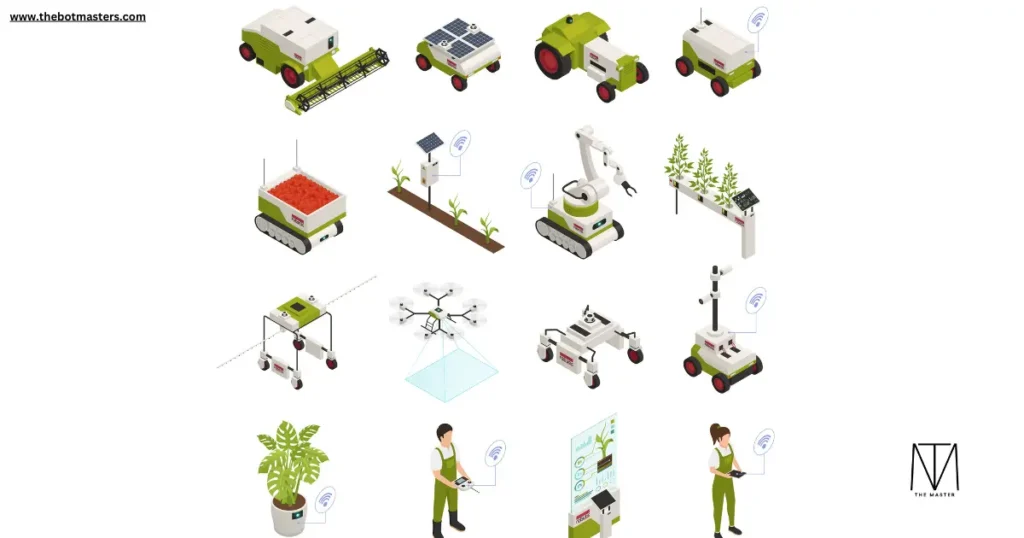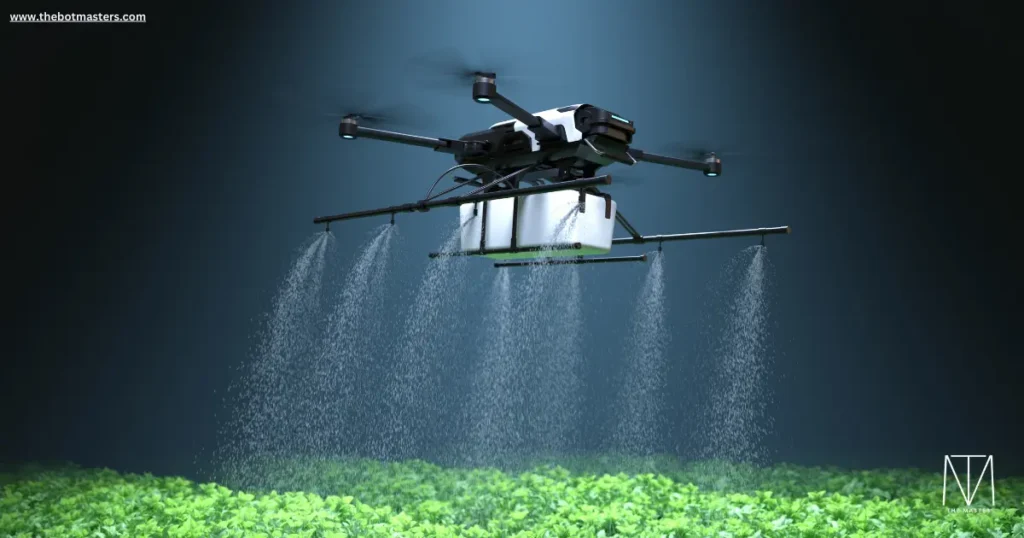Agriculture is just one of the fields where artificial intelligence (AI) is revolutionizing the game. With the increasing demand for food production to sustain the growing global population, farmers are turning to AI tools to enhance efficiency, make informed decisions, and ensure sustainable practices. This article explores the profound impact of AI in agriculture, from precision farming to future trends.

Table of Contents
I. Introduction
A. Definition of AI Tools in Agriculture
AI tools in agriculture refer to the integration of advanced technologies like machine learning, data analytics, and robotics to optimize farming processes. These tools enable farmers to make data-driven decisions, resulting in improved crop yields and resource management.
B. Importance of AI in Modern Agriculture
In the face of climate change and the need for sustainable farming practices, AI plays a crucial role in revolutionizing traditional agricultural methods. It empowers farmers with real-time data, allowing them to adapt to changing conditions and maximize productivity.
II. Applications of AI in Agriculture
A. Precision Farming
1. Smart Irrigation Systems
AI-driven smart irrigation systems analyze weather patterns, soil moisture levels, and crop requirements to deliver the precise amount of water needed. This not only conserves water but also prevents over-irrigation, reducing resource wastage.

2. Crop Monitoring with Drones
Drones equipped with AI technology provide farmers with high-resolution images of their fields. This data helps identify crop health issues, detect pests, and assess overall crop conditions, facilitating timely intervention.
B. Crop Prediction Models
1. Weather-Based Predictions
AI algorithms process vast amounts of historical and real-time weather data to predict optimal planting times, harvest periods, and potential weather-related risks, allowing farmers to plan their activities more effectively.
2. Machine Learning Algorithms
Machine learning models analyze data on crop performance, soil health, and environmental conditions to predict crop yields accurately. This proactive approach enables farmers to optimize resource allocation and enhance overall farm productivity.

C. Soil Health Monitoring
1. Sensors and IoT Devices
AI-driven sensors and Internet of Things (IoT) devices monitor soil health parameters such as nutrient levels and pH. Farmers receive instant updates, enabling them to adjust fertilization strategies for optimal crop growth.
2. Data-Driven Decision Making
By collecting and analyzing data on soil conditions, AI tools assist farmers in making informed decisions regarding crop selection, rotation, and soil improvement practices. This leads to sustainable farming practices and long-term soil health.
III. Benefits of Implementing AI in Agriculture
A. Increased Efficiency
AI tools streamline farming operations, reducing the need for manual labor and minimizing resource wastage. This results in increased overall efficiency and productivity on the farm.
B. Resource Optimization
With precise data on weather, soil, and crop conditions, farmers can optimize the use of resources such as water, fertilizers, and pesticides. This not only reduces costs but also promotes environmentally friendly farming practices.
C. Sustainable Agriculture Practices
AI in agriculture promotes sustainable practices by optimizing resource use, reducing environmental impact, and supporting biodiversity. Farmers embracing AI contribute to a more resilient and ecologically balanced agricultural ecosystem.
IV. Challenges and Solutions
A. Data Security Concerns
1. Encryption Measures
To address concerns about the security of farm data, AI tools incorporate robust encryption measures. This guarantees that private data is shielded from unwanted access.
2. Compliance with Privacy Standards
Farmers can choose AI solutions that adhere to privacy standards and regulations. This commitment to compliance builds trust and encourages widespread adoption of AI in agriculture.
B. High Initial Costs
1. Long-Term ROI
While the initial investment in AI tools may be high, the long-term return on investment is significant. Increased productivity, resource optimization, and improved crop yields contribute to the financial sustainability of farms.
2. Government Subsidies and Grants
Governments and agricultural organizations often provide subsidies and grants to encourage the adoption of AI in agriculture. Farmers can explore these financial incentives to offset initial costs.

V. Success Stories
A. Real-Life Examples of AI Implementation in Agriculture
Several farms worldwide have successfully implemented AI tools. For instance, XYZ Farms increased their crop yield by 20% using AI-driven crop prediction models, showcasing the tangible benefits of adopting advanced technologies.
B. Positive Impact on Crop Yields and Farm Productivity
Farmers who have embraced AI report higher crop yields, improved soil health, and enhanced overall farm productivity. These success stories inspire others to explore and implement AI tools on their farms.
VI. Future Trends in AI Agriculture
A. Integration of Robotics
The integration of AI and robotics is a promising trend in agriculture. Autonomous robots equipped with AI algorithms can perform tasks such as planting, harvesting, and weed control, reducing the reliance on manual labor.
B. Advancements in Machine Learning Models
Continuous advancements in machine learning models allow for more accurate predictions and insights. As technology evolves, AI tools in agriculture will become even more sophisticated, providing farmers with enhanced decision-making capabilities.
C. Collaboration with Sustainable Practices
Future AI tools in agriculture will likely focus on seamless integration with sustainable farming practices. This includes optimizing resource use, reducing environmental impact, and promoting biodiversity for a more resilient and eco-friendly agricultural sector.

VII. Conclusion
A. Recap of the Significance of AI in Agriculture
In conclusion, AI tools have revolutionized agriculture by providing farmers with valuable insights, improving efficiency, and promoting sustainability. The integration of AI in various aspects of farming has resulted in tangible benefits, paving the way for a more resilient and productive agricultural future.
B. Encouraging Continued Innovation
As technology continues to advance, the agriculture industry should embrace innovation and explore new AI applications. Continued research and development will further enhance the capabilities of AI tools, ensuring a sustainable and prosperous future for agriculture.
FAQs
AI tools can be tailored to fit farms of all sizes, from small family-owned operations to large commercial enterprises. The scalability of AI solutions allows farmers to choose tools that align with the specific needs and scale of their farm.
AI tools contribute to environmental sustainability by optimizing resource use, reducing waste, and promoting eco-friendly farming practices. By providing accurate insights, these tools help farmers make decisions that minimize their environmental impact
Many AI tools in agriculture are designed to be user-friendly, with intuitive interfaces that require minimal technical expertise. Training and support are often provided to ensure that farmers can harness the full potential of these tools.
AI in agriculture plays a crucial role in addressing food security challenges by improving crop yields, optimizing resource use, and enhancing overall farm productivity. These factors contribute to a more secure and sustainable food supply.
Privacy concerns are addressed through robust encryption measures and adherence to privacy standards. Farmers can choose AI solutions from reputable providers who prioritize the security and confidentiality of farm data.
Read More…
The Ethical Dilemmas of AI-Powered Devices
The Transformative Power of AI in Entertainment
AI Tools in Finance: Revolutionizing the Financial World
AI Language Translation Devices for Travelers
AI Tools in Education: Transforming the Future of Learning
Supercharge Your Productivity with AI Gadgets
AI Tools for Marketers: Revolutionizing the Way You Reach Your Audience
AI in Healthcare: 7 Key Innovations Transforming Medicine
AI Tools for Businesses: Enhancing Efficiency and Growth
The Future of Technology: Exploring Wearable AI Tech
Exploring the World of Smart Home Devices: A Comprehensive Guide
An Introduction to AI Tools: Unlocking the Power of Artificial Intelligence
How to Guide for Important AI Tools
“Discover AI Tools on Amazon”
If you’re interested in exploring AI Translation devices, you can find a wide range of options on Amazon. From smart devices to data analytics software, Amazon offers a selection of AI solutions that can help your business thrive. Explore AI tools on Amazon today to stay ahead in the digital age.
Please note that if you decide to make a purchase through this link, I may earn a small commission at no additional cost to you.
“Thank you for your support!”
